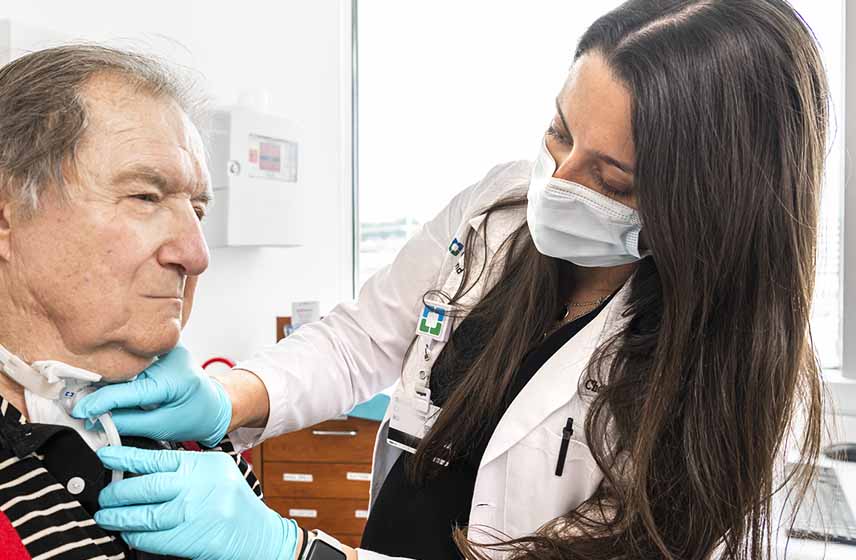
Tracheostomy care
Tracheostomy care involves maintaining the cleanliness and proper functioning of a tracheostomy tube, which is inserted into a surgically created hole in the windpipe (trachea) to assist breathing. Proper care is essential to prevent infections, ensure airway patency, and promote healing.
Pyoli Nursing Services in Dehradun
Here are some general steps for tracheostomy care:
Hand Hygiene: Always wash your hands thoroughly with soap and water or use hand sanitizer before and after performing tracheostomy care.
Equipment Preparation: Gather all necessary supplies, including clean gloves, sterile saline solution, sterile gauze pads, a suction machine (if needed), and a clean tracheostomy tube (if replacement is required).
Positioning: Position the patient comfortably with their head slightly elevated to ease breathing and allow easier access to the tracheostomy site.
Assessment: Assess the tracheostomy site for signs of infection, such as redness, swelling, or discharge. Check for proper placement and patency of the tube.
Suctioning (if needed): If there is mucus or secretions present in the tracheostomy tube, use a sterile suction catheter to gently suction them out. Avoid suctioning too aggressively to prevent injury to the delicate tissues.
Cleaning: Clean around the tracheostomy site using sterile saline solution and sterile gauze pads. Gently remove any crusted secretions or debris to maintain cleanliness and prevent infection.
Tube Changes (if needed): If the tracheostomy tube needs to be changed, follow the healthcare provider’s instructions carefully. Use sterile technique to remove the old tube and insert the new one, ensuring proper placement and secure fixation.
Securing the Tube: Ensure that the tracheostomy tube is securely fastened in place with ties or Velcro straps to prevent accidental dislodgement.
Skin Care: Inspect the skin around the tracheostomy site for any signs of irritation or breakdown. Keep the skin clean and dry to prevent infection and skin breakdown.
Monitoring: Monitor the patient’s respiratory status, oxygen saturation, and any signs of distress during and after tracheostomy care. Report any abnormalities to the healthcare provider.
Documentation: Document the tracheostomy care procedure, including any observations, interventions performed, and the patient’s response to care.
Pyoli Nursing Services -It’s essential for caregivers to receive proper training and education on tracheostomy care techniques and to follow the healthcare provider’s instructions carefully. Additionally, regular follow-up appointments with healthcare providers are important to monitor the tracheostomy site and address any concerns or complications promptly.
Contact Pyoli Nursing Services in Dehradun for Tracheostomy care
